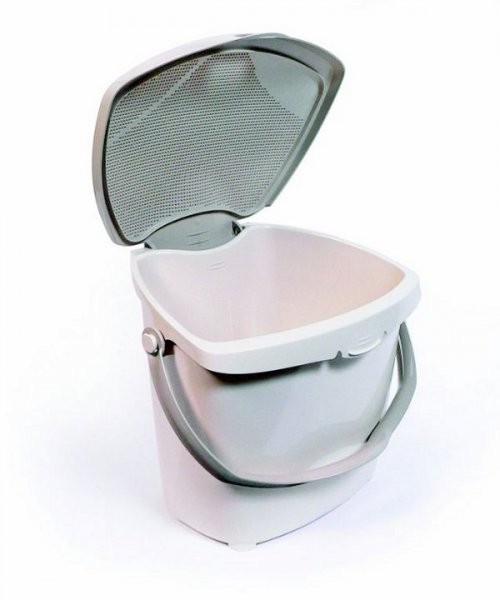
By Rod Muir, General Manager, Sure-Close
Who believes most residents care where the food scraps they separate are processed? I don’t. What about the type of truck used in transport? I sincerely doubt that too. The curbside container? Sure it’s somewhat important but consider it’s used only once a week to get food scraps out to the curb.
The in-home kitchen container is a different story altogether. It’s not unrealistic to believe that every member of the household, over the age of five, uses the kitchen container, and likely several times a day. As such it should be considered the most important tool of all when it comes to getting residents to start on a food scrap program, and just as importantly, stick with the program as the perceived barriers to participation, cleanliness and odours are eliminated.
I read recently it takes nine to 10 weeks to develop a habit. That’s 70 days – quite possibly 20 to 30 trips from the kitchen out to the curbside cart. In that extended period of time it’s not hard to imagine that out of every 100 homes who have decided to give food scrap separation a try, several are going to accidentally drop the container on the living room rug. If it spills open all over the place, how quickly do you think that home will stop separating food scraps?
Face it, the kitchen container should, at a minimum, close properly and stay closed if you drop it. What else? Well if you analyze it, people only perform four functions with the kitchen container. They fill it, carry or otherwise move it around, they empty it, and then likely they clean the container. If any or all of these functions is made easier, it’s common sense residents will be much more likely to start and stay on a program. And the many millions of dollars that have been spent on composting facilities, trucks and carts will pay off.
Sure-Close indoor food scrap containers have numerous totally unique design features, with this ease-of-use in mind. Sure-Close gets its name from its rigid rim, interlocking seal and superior lid clasp, which together ensure the container stays closed if accidentally dropped. By rolling over the top rim on the body, the shape is much more rigid and true. Meanwhile a channel in the lid, the exact same shape as the rim, always brings the lid and the rim into perfect alignment, ensuring the lid clasp always closes properly and stays closed.
The stay up lid, letterbox shape and wide mouth of Sure-Close all ease filling and help keep managing food scraps in the kitchen cleaner. For example, the stay-up lid means the lid locks and remains upright at 90 degrees, so now if both your hands are soiled from food preparation there’s no need to grasp and soil the lid. You can just knock the lid closed with the back of your hand, wrist or forearm. The pail handle for carrying is also smoother and easier to clean if it becomes soiled.
When it comes to carrying the Sure-Close, its “under the (front) lip” grip allows the container to be easily picked up by the front in a stable fashion. The back grip is always outside the container so it’s also a clean grip for emptying. Plus, the back grip combined with the bottom grip means a resident can get a firm, two handed grasp on the container, for shaking loose stuck-on material.
Once Sure-Close has been filled, carried and emptied, it’s time to be cleaned. The “quick-release lid” feature means that by simply applying a bit of pressure to the back of the container, the lid quickly pops off. Now it can be cleaned separately or soaked overnight. Also, now in two pieces, these units fit much more easily into the sink or dishwasher. As with the handle, the surfaces of Sure-Close are smooth and easy to clean.
Now, let’s talk about odours, which is the other big barrier in food scrap separation. Odours are the result of anaerobic fermentation, which is fostered in a container with a solid lid, as water is not allowed to escape, nor room air to enter. But by venting the lid, these two conditions are reversed greatly, reducing fermentation and the resulting odours. Venting also drops the temperature within the container, causing a further reduction in odour generation.
Maybe it’s counter intuitive, but think of two forgotten sandwiches – one in a sealed plastic bag and the other just sitting out on the counter. In several days the sandwich in the bag is mouldy and smells. The sandwich on the counter is dry as toast and has little or no odour. Why, because you let water escape and air enter. The vented vs. solid lid is the exact same principle. The big benefit for generators is the cost savings in water loss, so hauling fees go down. And even more importantly, they have less weight at the compost facility, therefore tipping fees also go down.
One final word if you intend to permit the use of biocompostable bags in a food scraps program; it’s essential that the lid of the container be vented. The chemistry of these bags results in a very high water vapour transfer rate. In simpler terms – they sweat. This liquid pools in the bottom of the container with predictively undesirable results. However with a vented lid, approximatively 70 percent of this water vapour can escape out the top.


